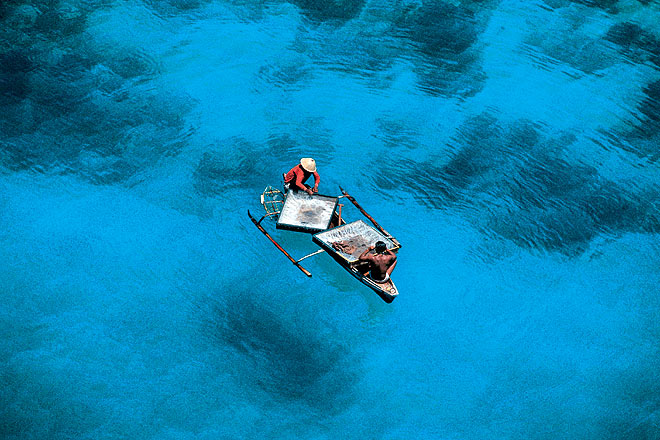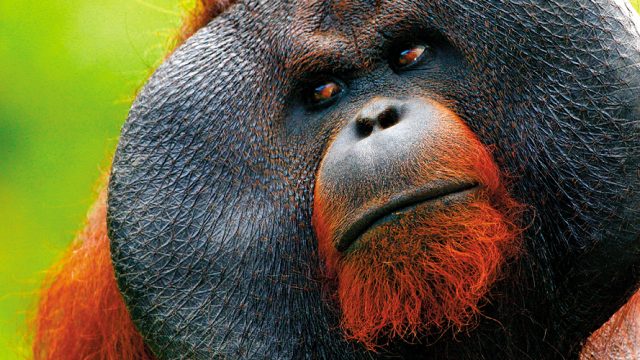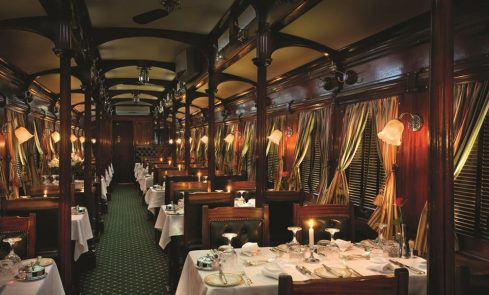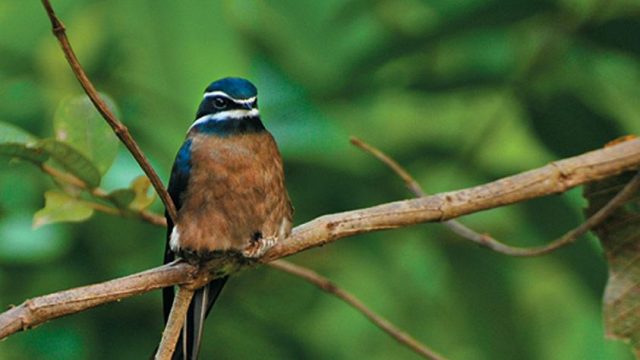I learnt more about headhunting than my comfort level allowed on the 30-minute drive from Kota Kinabalu
Young Murut men raided other tribes to collect heads. Headhunting was a rite of passage, turning young men into warriors and eligible bachelors. But one head wasn’t enough. The greatest warrior had the most number of skulls.
John dramatically lowered his voice and said, “They would sometimes take ladies’ heads too.” My fellow tourists gasped. Since the group was all women, I suspected he was trying to get a rise out of us. But he was serious. Murut men waited in ambush by streams where women bathed and did their laundry. They were easy to overpower, and there was no law against taking their heads. John said, “The rule of the game was to get a head, a human head. It didn’t matter if it was male or female.”
But the chilling story didn’t end there. Murut warriors didn’t spare even pregnant women, and in fact, sought them out because they got two heads with one blow. “The spirit of a pregnant woman was more powerful,” John said. Not only was headhunting a mark of bravery, the spirits of the dead did the killers’ bidding. Each warrior owned a chunk of forest for hunting and procuring medicinal herbs. Since these were far away from their longhouses, spirits were essential to guard them from trespassers.
I listened to John’s story with rapt attention, forgetting to look at the passing scenery. He described how he had once fallen victim to spirits. He led a group of tourists in circles even though he had been to that forest many times before. All the markers pointing the way had mysteriously disappeared. Since he didn’t have a live chicken to sacrifice to the spirits, he made an offering of chicken sandwiches from their packed lunch boxes. He found his way back to civilisation, he concluded with satisfaction.
When Sabah was a British colony, Christian missionaries began an intensive programme of conversion, and in 1915, headhunting ended in Sabah, Malaysian Borneo. John said Christianity alone wasn’t responsible. The singular event that put a stop to it was the assassination of Ontoros Antanum, the powerful Murut chief, by the British.
While I was relieved headhunting was an event of the past in Sabah, John said it occurred sporadically in other parts of Borneo.
Mari Mari Cultural Village, operated by Traverse Tours, is spread over an eight-acre forest in Kionsom village. I tasted lihing, a mild rice wine made by the Dusun people, saw Rungus tribesmen start a fire with bamboo and without the aid of matchsticks, learnt how the crocodile-worshipping Lundayeh made vests from tree bark, sampled crisp-fried, sweet qui jala, a Bajou speciality similar in taste to the Tamilian murukku or Marathi chaklis, and quenched my thirst with pandan juice.

The Murut longhouse, a timber and woven bamboo construction, had an indoor trampoline called lansaran made of bamboo and cane. A prize bag hung from the ceiling. The men chanted as they bounced faster and faster, higher and higher, until they built the momentum to make the winning leap. The extremely strong and pliable supporting beams of the lansaran were disconnected from those holding up the living quarters, so our leaping didn’t bring the house down. They may be ruthless, but the Murut were also fun-loving.
The 90-minute tour of the village climaxed in a music-and-dance performance by young men and women bedecked with argus pheasant feathers and colourful beads.
The tour package included a luncheon feast of traditional Sabahan cuisine — rice, noodles, stir-fried edible leaves with anchovies, grilled shrimp, batter-fried fish, and deep-fried dried fish. There may have been some chicken but I paid no heed. Sabah is known for its seafood and I made the most of the occasion.
I flew into Tawau, a coastal town in south-eastern Borneo, and met Glen Hernaez, who was to be the tour guide for the rest of my stay. I followed Glen and the others in the group up a hill, stepping over tree roots, scrambling up the steep volcanic slope, and trying to keep pace. Although the 28,000-hectare Tawau Hills Park, a forested reserve, was a mere 20 minutes from town, there were hardly any other tourists along the way. After a 900-metre hike, we came to a stop in front of a mammoth, smooth-trunked tree. Buttresses, snaking in every direction, propped up the world’s tallest tropical tree. Called the giant Mengaris tree, its crown, visible through gaps in the canopy, towered 88.32 metres above the ground. Another giant nearby was reported to be a wee 16 cm short.
Walking downhill ought to have been easier, but everyone was keen to outrace the leeches. Despite the punishment my knees and thighs bore, I did donate a few drops of blood.

From Tawau, our van sped at 110 kmph for Semporna, the gateway to a smattering of islands famed for snorkelling and scuba diving. An ornate wooden boat with colourful decorations graced the entrance to the wharf. Broad in the beam and with a single mast draped with colourful sails, it didn’t seem seaworthy. Glen said, “It’s called lepa and belongs to the Bajau tribe.” Every April, different settlements of this seafaring tribe of fishermen enter a lepa beauty pageant competition. Young ladies dressed in their best finery dance on a platform on the bow of the wide canoe. Sadly, it wasn’t April and I could only imagine the scene.
While I waited for our boat to be outfitted, I checked out a map of dive-sites in the neighbourhood. Some had amusing names such as the House of Horrors, Alice in Waterland, and Juvenile Jail, while others were boorishly mundane: the Toilet Seat, Chew on This, and Nappy Rash.
Our boat headed full-throttle southwards across the Celebes Sea and we passed clusters of huts on stilts in shallow waters. Large nets draped down the sides of these Bajau abodes that Glen said were fish cages. A plate-sized fish fetches the best price. So the Bajau trapped small fish and fed them up in these cages until they reached the right size. We passed several junkong, the traditional Bornean dugout canoes, outfitted with outboard motors, ferrying people, catch and cargo. Ninety minutes later, we docked at Mabul Island. Across the jetty, an oil rig jutted out of the sea. What it lacked in looks, it made up with its low carbon footprint. The former derelict rig was imaginatively refurbished as a divers’ resort by Seaventures, a commendable effort compared to the timber and concrete constructions I was to see onshore. The pier was made entirely of Bornean ironwood planks and columns. I was stunned by the quantity of timber used on the walkway. Glen said the ironwood columns driven into the shallows to support the structure would last 50 years with no maintenance. This durability made the slow-growing species of tree a rarity.

We walked through an impoverished Bajau hamlet. Mothers hurried to the jetty leading their grimy-faced kids dressed in torn clothes. One man carried an emaciated, sick woman piggyback. The infirm brought up the rear. When I looked askance, Glen pointed to another boat docked at the jetty, marked prominently with the medical cross. The floating hospital brought healthcare to these offshore islands.
One little shack slapped together with foraged pieces of mismatched timber announced a salon, where hip Bajau could get hair extensions and colour their hair. We stepped over a low fence that demarcated the limits of the shanty. Beyond the fence, a long lineup of resorts fringed the clean beach. White bodies lay inert on deck chairs, with glasses of drinks and bottles of lotion within reach. At the far end of the beach, a group of Malaysian police, in their telltale blue uniforms, sat chatting in the shade of a tree.
The memory of the November 2013 kidnapping remained fresh in the locals’ memory. A group of tourists and resort workers was abducted from Pom Pom Island, less than 60 kilometres northeast of Mabul, by Abu Sayyaf terrorists, and taken to nearby Philippines. One resisted capture and was shot dead. Eventually, Philippine security forces freed the captives. This wasn’t the first time these terrorists had struck. In 2000, they abducted 21 tourists from Sipadan island. Their release cost millions of dollars in ransom paid by Malaysia and Gaddafi’s Libya. Like the headhunters of yore, these modern-day kidnappers have discovered that the lives of others gave them power.
These worrisome stories ceased to matter as soon as I donned a snorkel and flippers and jumped off the boat. Beneath the calm surface, I became lost in the mesmerising world of green parrot fish, purple clams, flamboyant banner fish, and schools of streamlined garfish and big-eyed trevally. Delicate sea fans, candy-like nudibranches, and starfish dotted the coral reef. Periodically, I lifted my head to check my bearings; it was so easy to drift away. I almost missed Ian, the snorkelling guide, signalling me urgently. I kicked my legs faster to reach his side as he gesticulated to a green sea turtle below us. Effortlessly, it moved its flippers in unison, flying through the water. I lost all sense of time and protested when my time in the water was up.

An overcrowded van transported me to a riverside jetty tucked away in an oil palm plantation at Kampung (village) Tunggulangan. The tourist-laden boat chugged up the Sungai (river) Buaya into the mangroves. My eyes searched the green foliage for any movement that would reveal a troop of the peculiar-looking proboscis monkeys. Everyone else was more worried about crocodiles. One tourist pointed to a floating log and yelled, “Crocodile!”
“Logodile,” said the tour guide dismissively.
A basking three-metre crocodile drew excited shouts and a frenzy of camera shutters clicking before the reptile slid into the water. About a hundred meters from the edge of an oil palm plantation, we saw a potbellied monkey with an enormous, fleshy, flat, pink nose that drooped over his upper lip. The lightweight females leapt away from us, followed by the male. Never before had I seen the species, and I wasn’t sure whether I would get another chance. I re-played the scene in my mind to savour the experience, when we ran into two other troops in quick succession.
After I returned home, friends asked, “Did you go to Danum Valley?” “Did you see orang-utans?” “Did you dive at Kapalai?” When I replied in the negative, they said, “Tsk, tsk,” and shook their heads disappointedly as if to say “If you haven’t done that, you haven’t seen Sabah.” That’s an excuse right there to go back.
The information
Getting there: Air Asia offers low fares and a strong network in the region. A Chennai-Kuala Lumpur ticket can cost up to Rs 9,000 one way. Special promos offer the route for as little as Rs 4,500. The Kuala Lumpur-Kota Kinabalu sector costs up to Rs 4,500. Kota Kinabalu-Tawau costs approximately Rs 1,000.
Visa: Apply online via www.vfsglobal.com/malaysia/india. Visa fee is Rs 1,000 and processing usually takes 4-6 working days.
Currency: MYR1 (Malaysian Ringgit)=Rs 19.
Where to stay: Kota Kinabalu offers a range of accommodation from the 5-star hotels like Shangri-La Rasa Ria (from MYR800 doubles; www.shangri-la.com/kotakinabalu/rasariaresort) to Borneo Backpackers (from MYR80 for air-conditioned doubles; www.borneobackpackers.com). I stayed at the 3-star Palace Hotel (from MYR165; www.thepalacehotelsabah.com), and at the charming Jesselton Hotel (from MYR220; www.jesseltonhotel.com). In Tawau, a standard room in the first and second floors of the LA Hotel (www.lahotel.com.my) costs MYR138. For a good night’s sleep, pick a room that’s not overlooking their bar or choose a higher floor (about MYR158). Another option is Emas Hotel (from MYR200; www.hotelemas.com.my). Most hotels offer free wi-fi and breakfast with room rent.
What to see & do: The Mari Mari Cultural Village accepts bookings in advance. Call Traverse Tours on +60-88-260-501 to arrange it for you or bookonline at www.marimariculturalvillage.com. The Rs 3,000 ticket covers the tour through the village plus lunch. Entrance fee to Tawau Hills Park is Rs 185 and the Semporna Proboscis River Cruise costs Rs 2,400 per person (including dinner). You can make all the arrangements yourself or hire a tour company such as Borneo Trails (write to [email protected]) or Borneo Passages ([email protected]) or Borneo Eco Tours ([email protected]).
Where to eat: Seafood aficionados can be spoilt for choice in Sabah. The LA Hotel Rooftop Garden in Tawau is a wonderful place to watch the sunset and eat sumptuous food under the stars.
What to carry: Raincoat, plastic wrapping for camera gear, sunscreen, comfortable walking shoes, swimsuit, flip flops, insect repellent, hat.
Malaysia
Sabah
tribal cultures
Leave a Reply
You must be logged in to post a comment.





